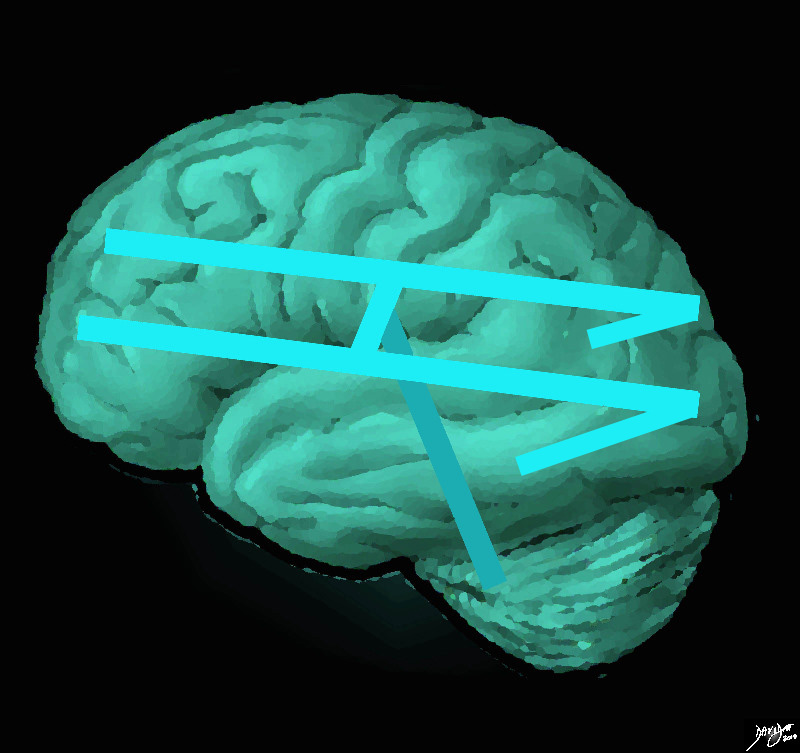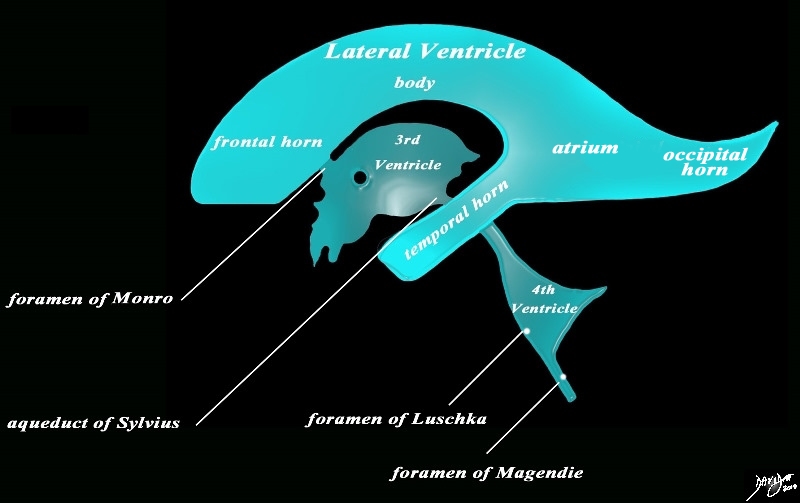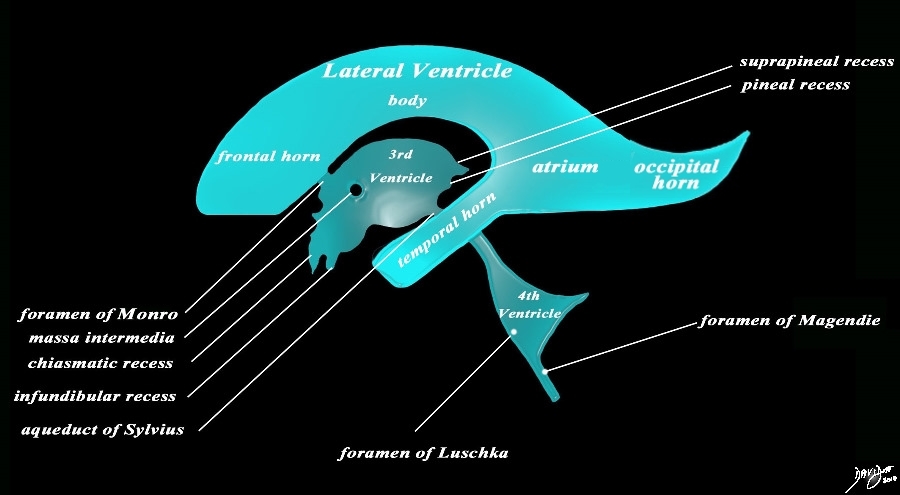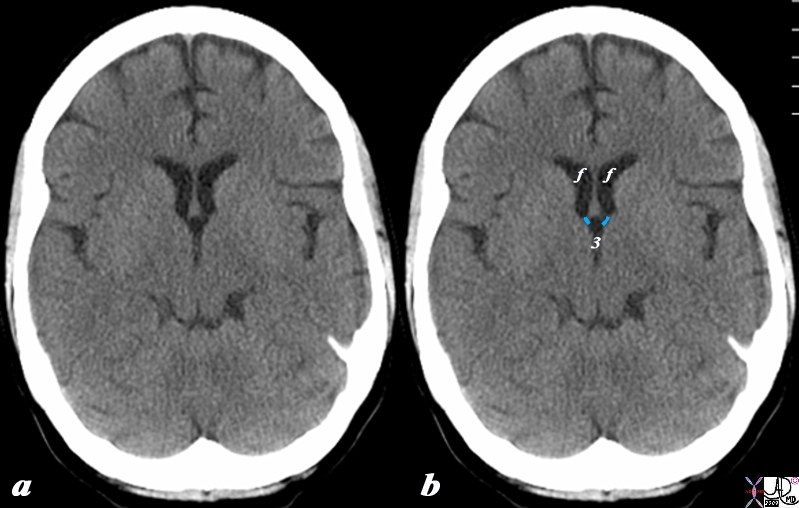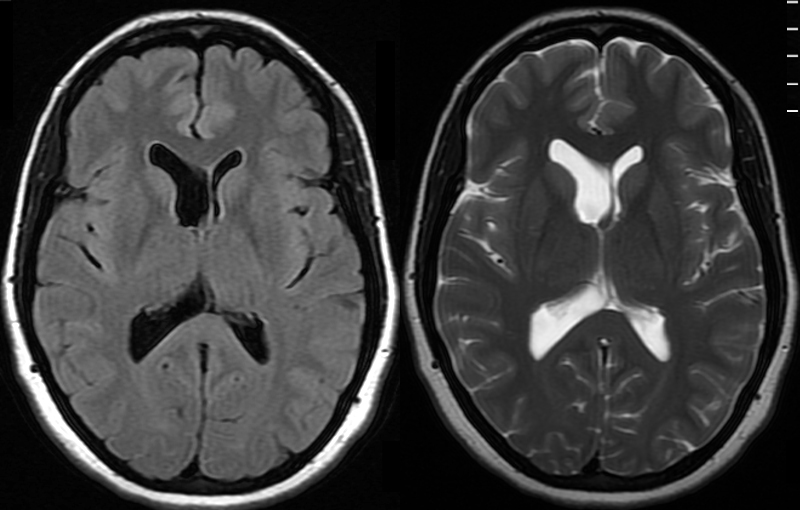Copyright 2010
Definition
The foramen of Munro is a narrow and short channel that connects the lateral ventricles with the third ventricle. Each lateral ventricle has a foramen of Munro which leads into a narrow channel called the sulcus of Monro. to join the 3rd ventricle. They are sitiated just posterior to the frontal horns and anterior to the body of the ventricle.
Structurally they are recognised by their position and small size.
Functionally they form an important channel to enable CSF to circulate from the larger lateral ventricles to the rest of the ventricular system and subarachnoid space.
Although they themselves are not the origin of disease, they may be easily obstructed by masses or hematomas in the area. They are there froe sometimes the site of obstructio and manifest with upstream hydrocephalus.
Often their identification by imaging is by inference of their position rather than direct visualization since they lie between the lateral ventricles and the superoanterior position of the 3rd ventricle.
Diagnosis of disease is usually by imaging either by MRI or by CT.
Treatment of hydrocephalus is either directed at the cause or by shunting.
|
The vectors of the ventricular System Overlaid on the Brain |
|
The ventricular system is overlaid on a drawing of the brain. Each limb of the horizontal component is situated in a cerebral hemisphere. The angled parts that extend inferiorly represent the temporal horns. The vertical limb includes the third and fourth ventricles Courtesy Ashley Davidoff MD copyright 2010 all rights reserved 94458e07.81s |
|
Sagittal View of the Ventricles – Basics |
|
The diagram in the sagittal projection reveals the horizontal portion called the lateral ventricle. It is a paired structure that houses the frontal horn, body, and the vertical portion which is composed of the 3rd ventricle, cerebral aqueduct and the 4th ventricle. The lateral ventricle consists of the frontal horn, body, occipital horn, atrium and the temporal horn The foramen of Monro connects the lateral ventricles with the third ventricle. The paired foramina of Luschka are sitiuated anteriorly in the 4th ventricle and they allow CSF to circulate in the subarachnoid spaces. The foramen of Magendie is a single structure and is situated posteriorly and it also enables CSF to enter the subarachnoid space. Courtesy Ashley Davidoff MD copyright 2010 all rights reserved 94459b10b02.82s |
|
Recesses |
|
The diagram in the sagittal projection reveals the horizontal portion called the lateral ventricle. It is a paired structure that houses the frontal horn, body, and the vertical portion which is composed of the 3rd ventricle, cerebral aqueduct and the 4th ventricle. The lateral ventricle consists of the frontal horn, body, occipital horn, atrium and the temporal horn The foramen of Monro connects the lateral ventricles with the third ventricle. The paired foramina of Luschka are sitiuated anteriorly in the 4th ventricle and they allow CSF to circulate in the subarachnoid spaces. The foramen of Magendie is a single structure and is situated posteriorly and it also enables CSF to enter the subarachnoid space. code brain ventricles lateral ventricles frontal horn body occipital horn atrium temporal horn 3rd ventricle 4th ventricle foramen of Monro formamen of Magendie Foramen of Luschka anatomy normal neuroanatomy diagram conceptual diagram structure principles Davidoff Art Courtesy Ashley Davidoff MD copyright 2010 all rights Courtesy Ashley Davidoff MD copyright 2010 all rights reserved 94459b10b02.82s |
|
Foramina of Munro Defining the Posterior Border of the Frontal Horns |
|
The CT scan in axial projection reveals the frontal horns (f) connecting with the 3rd ventricle (3) via the small foramina of Munro (overlaid in light blue). The posterior border of the frontal horns is defined by the foramen of Munro on either side. Courtesy Ashley Davidoff MD Copyright 2010 All rights reserved 98169cL.8s |
|
Normal Asymmetry of the Lateral Ventricles Symmetry of the Small Foamina of Munro |
|
The MRI shows a FLAIR and a T2 weighted image revealing normal asymmetric development of the lateral ventricles in a 41 year old female. Note however the two symmetric small channels representing the foramina of Munro which are not affected by the asymmetry. Courtesy Ashley Davidoff MD Copyright 2010 89044c |

